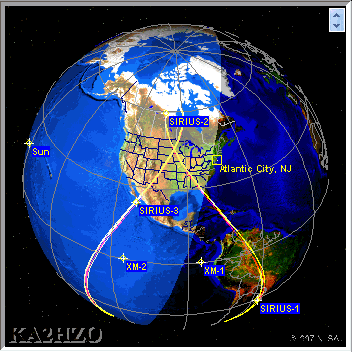This is a fairly brief lesson, but it covers a great deal of decision making for advertisers. You and your team can use the items in this lesson as a checklist for designing a radio advertising campaign for your product or service.
Why would you choose radio for your advertising?
1. It fits your target consumer.
2. It fits your target area.
3. It fits your product or service.
4. It has other advantages over other media.
How might radio fit your target consumer?
Your target consumer might be someone who…
1. Listens to the car radio while driving (truck driver, commuter, etc.)
2. Works in a place that has the radio playing all day (a laborer who plays it to keep his mind occupied, for example)
3. Listens to the radio only at certain times (after school and before bedtime, while driving to or from work)
4. Manages a store and plays the radio to provide atmosphere for his customers
5. Happens to hear the radio where he or she is shopping
6. Plays the radio while doing housework (housewife, cook, maid, etc.)
Who is your target consumer?
Each of these people listens to the radio at different times.
1. Listens to the car radio while driving (truck driver (all hours), delivery worker (9:00 AM-6:00 PM), etc.)
2. Works in a place that has the radio playing all day (a laborer who plays it to keep his mind occupied (9:00-5:00), night watchman (evening or night), etc.)
3. Listens to the radio only at certain times (after school and before bedtime (5:00-10:00), while driving to or from work 8:00-9:00, 5:00-6:00))
4. Manages a store and plays the radio to provide atmosphere for his customers (Radio station may vary according to type of store or time of day.)
5. Happens to hear the radio where he or she is shopping (variable)
6. Plays the radio while doing housework (housewife, cook, maid, etc. (Radio station may vary according to age of person or time of day.))
Choice of radio stations depend on target consumer.
1. Listens to the car radio while driving (truck driver (country music), delivery worker (pop music), etc.)
2. Works in a place that has the radio playing all day (a laborer who plays it to keep his mind occupied (variable), night watchman (something light), etc.)
3. Listens to the radio only at certain times (after school and before bedtime (pop, rock, or hip-hop), while driving to or from work (depends on type of person))
4. Manages a store and plays the radio to provide atmosphere for his customers (Radio station may vary according to type of store or the store’s target customer.)
5. Happens to hear the radio where he or she is shopping (variable)
6. Plays the radio while doing housework (housewife, cook, maid, etc. (Radio station may vary according to age of person or time of day. This person probably will be a woman.))
How might radio advertising fit your target area?
Your target area might be…
1. Just the city and surrounding county (small radio station, low-cost advertising)
2. A mid-sized state, province, or island (medium-sized radio station, somewhat higher cost for advertising)
3. An area covering thousands of square kilometers (more listeners, higher overall cost; it may, however, cost less per listener.)
How might radio advertising fit your product or service?
Your product or service might…
1. Appeal to reason as much as it does to the eye (for example, help in making a decision)
2. Appeal to the imagination as much as it does to the eye (for example, concepts such as relaxation or confidence)
3. Be difficult to portray in more visual media (for example, medicine)
4. Be more suitable to radio due to other reasons.
Now it’s your turn!
Decide how your product or service may benefit from radio advertising. Design a radio advertising campaign that will fit your product or service and your target consumer. Using real radio stations in your area as a model, decide on which radio stations you will place your advertisements and at what times. Be prepared to support your decisions based on the criteria mentioned in this lesson.

No comments:
Post a Comment